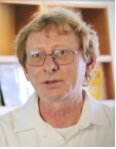| Biography | |
|---|---|
 Dr. Bruno WACOGNE FEMTO-ST Institute, France |
|
| Title: White light spectroscopy: a new old technique to monitor Advanced Therapy Medicinal Products production | |
| Abstract: Speaker: Dr Bruno WACOGNE, FEMTO-ST Institute, France Co-worker: Dr Annie FRELET-BARRAND, FEMTO-ST Institute, France Co-worker: Mr Alain Rouleau, FEMTO-ST Institute, France Abstract: White light absorption spectroscopy is a quite old optical method used to qualify biological or chemical solutions. Probably the most well-known technique is the Beer-Lambert method whose goal is to measure absorption at particular wavelengths in order to assess the concentration of a particular component. This method was created during the 18th century. Rapidly, the emergence of efficient optical spectrometers allowed exploiting the information contained in the whole absorption spectrum. However, these voluminous apparatuses and the difficulty to manually describe the specific features contained in the recorded spectra limited the use of white light spectroscopy in laboratories or companies. Nowadays, the equipment has been considerably compacted and the calculation possibilities have benefited from the computer science and microfabrication breakthroughs. It is now possible to envisage the integration of white light spectroscopy directly in production systems in order to provide sampling-less and real time analysis of bioreactor contents. This possibility is particularly interesting during the production of Advanced Therapy Medicinal Products (ATMPs). They are promising therapeutic solutions based on modification of biological substances either directly from the patient to be treated or from healthy donors. However, these products suffer from their prohibitive price (few hundred thousand dollars per dose) linked to trained people, sterile clean-room environments and multiple quality controls throughout the whole process. These quality controls rely on regular samplings of the bioreactor’s content which increases the risk of contamination and delays analysis results. In this conference, we present simple and real time white light spectroscopy means to simultaneously monitor T-cell growth, detect contaminations and estimate production quality. The methods are based on the mathematical description of T-cell and bacteria absorption spectra shapes. This not only allows measuring cell concentration, but also detecting any contamination and monitoring production. Since white light spectroscopy is contactless, sampling the bioreactor’s content is no longer required and on-line as well as real time operations becomes possible. Implementing such a system would be of great interest in terms of research, industrial manufacturing and more importantly in terms of benefit to patients. | |
| Biography: Dr Bruno Wacogne is a CNRS Research Director at the FEMTO-ST Institute (one of the biggest Science and Technologies laboratory in France) where he was the head of the "Photonics for medical instrumentation" team before to join the BioMicroDevices group. He created and is now leading the Biom'@x transversal axis "Science et technology for personalized medicin" within this Institute. In 2010, at the request of Besançon University Hospital, he applied and has been awarded a Translational Research Fellow position from the National AVIESAN Alliance. This is a supplementary position that allows him to be at the interface between the health activities at the FEMTO-ST Institute and the Clinical Investigation Center in Technological Innovation at Besançon University Hospital. At the hospital, he is now the technological supervisor of the institution and the head of "Microsystems and biological qualification" unit. His research interests concern translational research, science and technology for health and more precisely immuno-combined medical devices, biological qualification devices and biomedical optics. He is author or co-author of about 230 communications among which 8 patents, 1 invited paper and about 30 invited conferences and keynote lectures. He is regularly chairman in international conferences and he co-organized the 14th International conference BIODEVICES in 2021. He has been awarded several times: Gold Micron at the International MICRONORA Workshop, Best Poster Award at the 2nd International Conference on Bio-sensing Technology, Amsterdam, The Nederlands. With his co-authors, he received the Best Paper Award at the 13th International Conference BIOSTEC in 2020. ___________________________________________________________________ Dr. Annie FRELET-BARRAND studied biochemistry at the University of Franche-Comté (France) and was graduated as MS in 1998. In 2006, she received her PhD degree on membrane proteins (MP) characterization at the Institute of Plant Biology, Zurich. During her postdoctoral fellowship (CEA Grenoble, France), she developed L. lactis system for functional characterization of MPs. In 2009, she became CNRS Researcher at CEA Saclay, studying MPs involved in liver detoxification. In 2015, she integrated the Institute FEMTO-ST and is now producing and characterizing by biological, biochemical and biophysical techniques diverse biological elements from MPs, vesicles to bacteria and mammalian cells. She published 19 research articles and 4 book chapters (h=14). ___________________________________________________________________ Alain Rouleau was born in 1975 in Grenoble (France). During these studies, he specialized in Biology including immunology, physiology, oncology and the design of devices for in vitro diagnostics. He is currently working at the Femto-ST Institute (Besançon, France) as a specialist in bio-interaction particularly in SPR (surface plasmon resonance). He is also technical manager of the CLIPP proteomic platform in Besancon. | |
